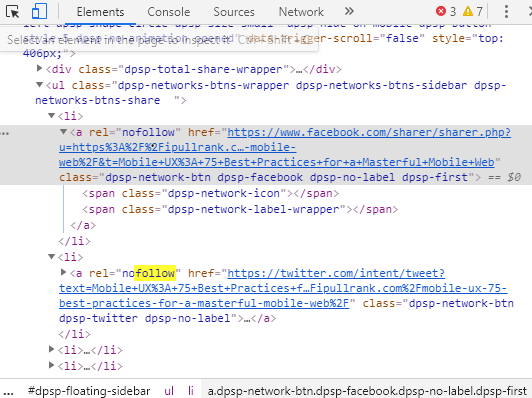
I’m going to come out and say it: link building in today’s world is a tough job, especially if you’re searching for high-quality links (which you should). But now, more than ever, building high-quality links to your site is essential.
Links are one of the most important components of organic search rankings, and often the quantity and quality of a website’s link profile is a key differentiator between what earns visibility and what doesn’t.
As is always the case, Google is changing–and their algorithm to evaluate links is evolving to combat low-quality links and spam. What does this mean for you?
Companies should make their link building efforts almost entirely content-driven to ensure they are building a natural, diverse link portfolio.
A Word about Google’s PageRank Algorithm
SEOs debate if Google’s PageRank–once THE determining metric for page value and a tool to evaluate link quality–is “dead” since the requirements have continually evolved and the metric has since depreciated. But while PageRank has devolved (Ahrefs has a great article on why PageRank still matters) it is a directional tool to help analyze and view sites the way Google sees them based on the quality of pages that link to it.
So while the PageRank toolbar may be dead, the algorithm is not and links still matter. And quality matters more than ever. Long gone are the days of spammy links from blog comments, press releases, and defunct directory submissions. Nowadays, your site can and will rank with 10X content and a diverse portfolio of quality links.
How to Determine if a Link is High-Quality
When performing link building outreach, you need to set a minimum quality for links. At iPullRank, we look to build links with a domain authority of 40 or more (which makes the process longer, but much more beneficial for your site.)
Links that will work in your favor:
- High-quality links from websites with domain authority above 40.
- Links from a diverse portfolio of websites–try to get links from different industries, bloggers, editorial sites, etc.
- In-content and In-context links
Links that won’t work in your favor:
There are plenty of low-quality links out there on the internet… link builders beware! The bottom line? Google’s gotten a lot smarter and that means a lot of old-school link building tactics don’t work (and actually work against you.) The takeaway? If it seems too easy or too good to be true… it is.
- Links from Press Releases: Your brand put out a press release announcing news in your industry. Although this may seem like a worthy link building strategy (and it used to be), Google now recognizes press release links as spam or a link scheme. Press Release links are low-quality and are a big “no.”
- Links from Blog Post & Forum Comments
- Links from low-quality Directories
- Links built by third-parties: Building links can be difficult and time-consuming, which is why a lot of brands/companies turn to third-party link builders to do the heavy lifting. If you’re working with a third-party link builder, you need to ensure that they are not engaging in any spammy or black-hat tactics.
Do-Follow vs. Nofollow Links
Think of “follow” links as votes, or points. The more “follow” links you have, the more popular you are (particularly if the domain and page authority of each link is high.) High-quality “follow” links provide equity to your site.
“No-follow” links were essentially created to stop spam. Back in the day, before PageRank came on the scene, link builders were employing all sorts of black hat tactics that led to false rankings. Although “no-follow” links oftentimes get a bad rap, they’re still valuable because these links, if well-placed, can drive traffic to your brand.
If you’re interested in figuring out if your link portfolio is full of no-follow links, you can use Ahrefs. Or, you can go to an individual page with a link, right click, hit “Inspect” and then Ctrl F “follow” or “nofollow” to see the status of a link.

Link Building Tactics
So, what’s the best way to build links? Creating 10X Content that is link-worthy and shareworthy. However, there are tactics that link builders can use to drive the visibility and engagement of extraordinary content.
Here’s a comprehensive list of link building tactics for 2019, taken from several authoritative sites focused on link building:
#1: 10X Content (Mother of Dragons, Champion of the Earth)
- Create Helpful Charts and Graphs
- Design Downloadable Icon Sets for Your Industry
- Develop Industry-Relevant, Downloadable E-Books
- Share Some Ego Bait (Ego bait is essentially tagging marketers/brands in positive press to get their attention and a link from them sharing it. Writers beware! You want to make sure ego bait is well-written and purposeful, not just a roundup of people/links.)
- Post Event Recaps (with Photos, Videos, etc.)
- Write Evergreen Blog Posts
- Compile a List or Glossary of Industry Terms
- Craft Well-Designed Infographics & Instructographics
- Share In-Depth Educational Content (like How-To Guides and Tutorials)
- Promote Interactive Case Studies (or well-written Case Studies)
- List Posts or Lists of Relevant Statistics (people are always doing research in your industry – help them out!)
- Newsjack Timely Stories and Inject Your Ideas!
- Craft Helpful Newsletters
- Find an Under-served Audience and Create Niche Content
- Craft Quizzes, Tests and Surveys (that share to social media)
- Write Seasonal Content (particularly for eCommerce Sites)
- Transcribe and Translate Your Brand’s Video Content
- Host Webinars with Interesting Topics
- Produce White Papers and Research Papers
#2: Outreach & Public Relations
- Building Links from Partners’ & Customers’ Sites
- Building Links from Brand Mentions in Articles & Press (reach out and ask for a link to your site/a relevant page that your brand is featured on.)
- Building Links from HARO (Help a Reporter Out) Submissions (you can easily join via their email list. Reporters/journalists are always looking for quality submissions from experts.) On that note, contribute to crowdsourced posts too!
- Building Links from Resource Pages (particularly from .gov and .edu sites)
- Get Interviewed for Relevant Editorial Sites & Podcasts
- Guest Blogging and Co-Branded Content
- Host an Event
- Partner with Influencers and Bloggers for a purposeful post/reason. If you ARE doing influencer/blogger link building, be sure your brand aligns with their voice/tone.
- Public Relations Outreach
- Reverse Image Search your logo and owned photos in Google. Reach out to each site and ask for a link via the photo
- Speak at Conferences within your Industry
- Sponsor Events
#3: Input
- Create a Better Business Bureau Profile
- Submit to Resource Pages (particularly .gov and .edu sites)
- Share Your Event on Event Calendars
#4: Technical Fixes
- Reclaim Links Pointing to 404s
- Fix Broken Links Pointing to Your Site
- Fix Broken Internal Links on Your Site
The New Rules of Outreach in 2019
Let’s keep in mind that link building is a lot harder now and many of these tactics require relationship-building and outreach. If spam is dead, form outreach emails are following.
When reaching out to start a conversation with a potential site, leave the templates alone. Craft a thoughtful, relevant ask. Be aware of how this may or may not benefit the webmaster. Create a pipeline to track responses and follow-up thoughtfully. NEVER ENGAGE IN A LINK EXCHANGE!
Read our post on Link Building Outreach and Why You Keep Getting Rejected
Monitoring Your Link Profile
Alright – you’ve built a great portfolio of links pointing to your website and now you need to deal with the upkeep. (YEP! There’s upkeep!) The first step of any link profile upkeep is monitoring your links
Here are some tools you can use for link building and tracking your links:
- Ahrefs: ah, Ahrefs (pronounced ayy-h-refs) is a gift to this earth. If you’re not using it… you should. I’m worried about you.
- Moz Link Explorer: lots of options, but mainly, you can figure out your competitor’s backlink profiles.
- Pitchbox: perform PR outreach, track the emails you’re sending, and start drip campaigns! This is great if you’re trying to build links through proactive outreach and want some templates to help guide you.
Link building in 2019 is less about taking any placement you can get and is all about creating content and assets that are worthy of being linked to. Ditch the spam and focus your efforts on great, 10X content.







